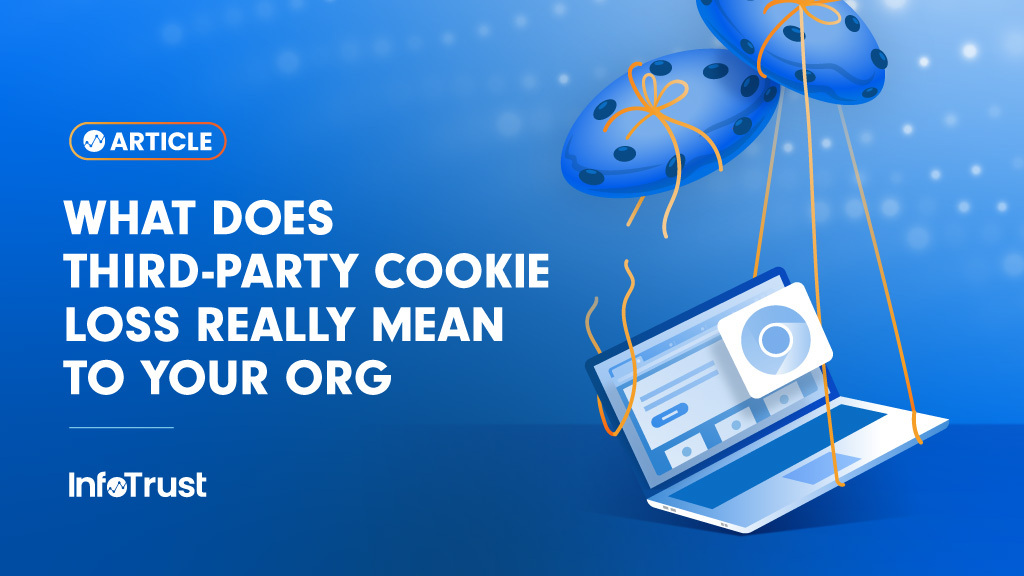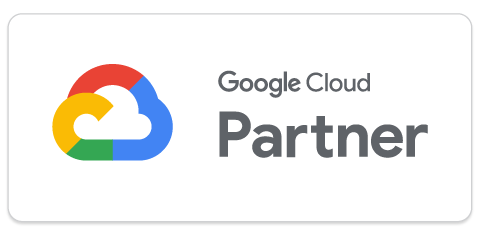While Google’s deprecation of third-party cookies has been a moving target for some time, it’s slated to finally happen in mid 2024. Google will test this change in Q1 2024 by phasing out third-party cookies on 1 percent of Chrome users. As that date comes closer, marketers and data practitioners have to answer important questions:
How will the deprecation of third-party cookies in Chrome affect my marketing stack?
How can I prepare for that depreciation?
In this article, we will address how to answer those two questions as well as how to gather as much information as you can before that depreciation date. First, it is important to cover what exactly is the role of third-party cookies and why they are being depreciated in the first place.
What is a third-party cookie and why is it being deprecated?
In short, third-party cookies are the mechanism of the browser to share the identity of users as they go from site to site to site. If a user goes from site A, and then to site B, and then to site C, third-party cookies allow us to share a single ID on all three of those sites, which serves as a tracker for the user and even a way to communicate with them through ads.
Users did not like that companies had a fingerprint of all their traffic across the internet. Also, users did not like that the fingerprint allowed companies to reach them via advertisements on any device. As the public gained knowledge of these martech-based cookies systems, concepts like consent became popular leading to fast development of Consent Management Platforms such as OneTrust. Consent Management Platforms, or CMPs, control what platforms are allowed to set cookies and send data to platforms. This gives users more control over if you can track them and communicate with them via advertising or not.
While this public sentiment change was shifting, platforms like Safari, Firefox, and Brave started announcing that they would do away with third-party cookies since the public saw them as invasive technology. This turned up the heat quite a bit for Google, which unlike the other browsers named, makes most of their money off advertising. The Google-owned Chrome software has the bear of the market share for internet browsers and there became a need to preserve that market presence and adhere to the changing privacy standards. Since Google knows that technology fuels quite a bit of money for the overall company, this depreciation was scheduled, allowing time for alternatives for ad spend to emerge.
Jump forward from the announcement of third-party cookie depreciation to today, and after a few date push-backs, Google seems solidified on the mid-2024 date for the deprecation. Companies are scrambling to understand how this will affect their stack and what they can do to prepare.
How can we measure third-party cookie deprecation’s marketing impact?
You may already be experiencing the effects of cookie loss in your stack. Safari and Firefox have already made this change, which means the loss of identity will already be affecting some percentage of your marketing stack. The central function of the deprecated cookies is to resolve identity. This identity is used to:
- Track user behavior across sites to understand commonly linked interest groups
- Build identity graphs so platform IDs can be used as advertising keys for activating audiences
- Understand cross-brand behavior
There are more things that can be done with these marketing cookies, but by analyzing the list above, you can identify where the deprecation is affecting you most. By storing all of your marketing and behavioral data in a data warehouse, you can view the historical change of your advertising performance from audiences to ROI. Pair this capability with your users’ browsers breakdown and you can find out just how well your marketing efforts run on Chrome, and how well they run on everything else.
How can we prepare for the loss of third-party cookies in Chrome?
There are a few prevailing schools of thought in preparation for the cookiepocalypse:
- Replace third-party cookie identity with a more durable identity
- Shift marketing efforts to being less identity-focused
- Build first-party data capabilities for optimizing marketing efforts internally
Replace Third-Party Cookies
For those in the replace third-party cookie identity column, there have been many discussions on what that will look like. Some have been trying to get an industry-defined way of generating identity so everyone shares the same functionality, but the jury is still out on that one. In the meantime, everyone tends to agree that for the most part people’s emails follow them around from site to site. If a user shares their email, it could be used as the functional identity tying a user from site to site and ultimately allowing us to advertise to them. Most functionalities, including Facebook cAPI, Google Signals, Enhanced Conversions, and more are focusing on tying PII to the current third-party identity graph in the coming months to preserve as much functionality in the current stack as possible.
Less Identity-Focused Marketing
Others believe the ship is sailing on targeted identity-focused marketing, and want to shift back to more contextual and macro-style marketing efforts. With consent making it even harder to send data to platforms, third-party cookies going away, and more privacy laws coming into effect, some marketers are planning on returning to less-personalized styles of advertising. Using cohorts, customer personas to determine audiences, and high-level UTM analysis we can choose where to put our marketing dollars based on aggregate performance. This is far more privacy-centric and can be done well by leaning into today’s cloud infrastructure. By storing your data in the cloud, you gain access to models and visual tools that can help you make more informed decisions on where you’re winning in your marketing efforts.
First-Party Capabilities For Future Marketing
Before this sea change, it was a very normal thing to distribute your marketing data across many valuable tools. However, now we need a central place to store all this distributed data so we can learn how to best leverage our marketing data. Platforms like server-side technology help you collect and store all of your valuable data in a first-party context. This ensures that you maximize data collection and gives yourself the agency to control how and where that data is stored so you don’t end up with holes in your customer journeys. Platforms like CDPs are also becoming more popular because they combine customer behavioral data (which is historically used for segmenting audiences) and customer personal information (normally stored in CRM, but the identity activator of the future). By storing your consented behavioral data with customer information like email, you have the full ability to segment users and activate them via email in any platform. The first-party approach is about making sure you maximize your data to ensure capabilities in this rapidly changing privacy-centric environment.
Regardless of where your team chooses to prepare for a cookie loss, that date is coming in under a year. It’s important to access, plan, and act now.



